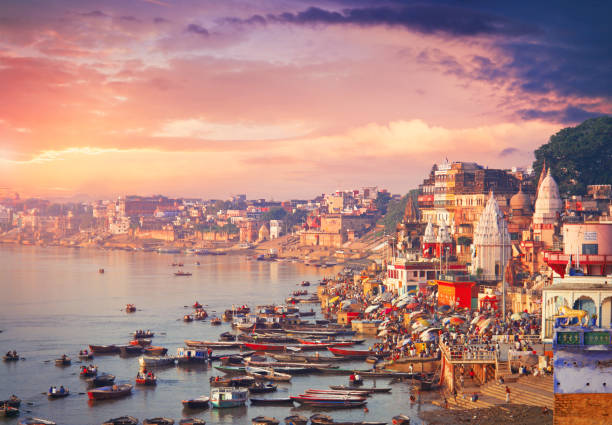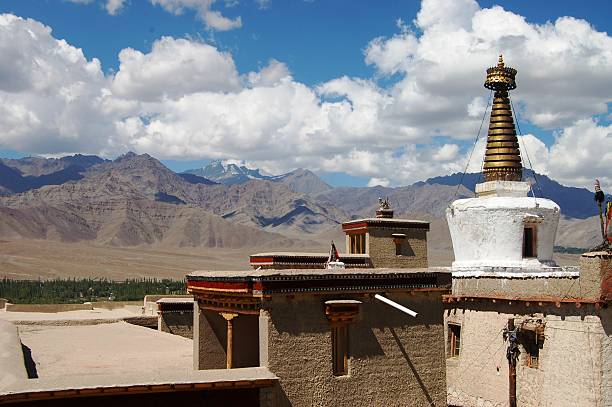Varanasi
often referred to as Kashi, is a city like no other. Nestled along the sacred banks of the Ganges River in the northern state of Uttar Pradesh, India, Varanasi is a city of immense spiritual significance, deep-rooted traditions, and profound cultural heritage. In this 800-word exploration, we will unravel the essence of Varanasi, delving into its rich history, spiritual allure, mesmerizing ghats, vibrant festivals, and its role as a beacon of Hinduism and spirituality.
Historical Significance:
Varanasi’s history is ancient and illustrious, dating back several thousand years. It is one of the world’s oldest continuously inhabited cities, and its historical significance cannot be overstated. The city finds mention in several ancient texts, including the Rigveda, one of the oldest sacred scriptures of Hinduism.
The city’s history is interwoven with religious and philosophical thought. It was a center for learning and intellectual discourse during the days of the Buddha and Mahavira. Over the centuries, it has attracted scholars, sages, and seekers from across the world, further enriching its intellectual and spiritual legacy.
Spiritual Allure:
Varanasi is often regarded as the spiritual capital of India. The Ganges River, flowing through the city, is considered one of the holiest rivers in Hinduism. For Hindus, it is believed that bathing in the Ganges in Varanasi can wash away one’s sins and lead to spiritual salvation.
The city is dotted with numerous temples, ashrams, and shrines dedicated to various deities, providing a spiritual sanctuary for pilgrims and devotees. The most famous of these is the Kashi Vishwanath Temple, dedicated to Lord Shiva, and the Sankat Mochan Hanuman Temple. Pilgrims and tourists alike flock to these sacred sites to offer prayers and witness the grandeur of Hindu rituals.
Mesmerizing Ghats:
Varanasi’s ghats, the stone steps leading down to the Ganges, are an iconic and integral part of the city’s identity. There are around 80 ghats along the river’s edge, each with its own unique significance and purpose. Some of the most notable ghats include:
1. Dashashwamedh Ghat: One of the most prominent and revered ghats, it is known for its daily Ganga Aarti ceremony. Thousands of pilgrims and tourists gather here to witness this elaborate ritual dedicated to the river goddess.
2. Assi Ghat: It is a popular spot for meditation and yoga, with several yoga centers and ashrams in the vicinity.
3. Manikarnika Ghat: This ghat is known for its connection to the cremation of the deceased. According to Hindu beliefs, being cremated at Manikarnika Ghat leads to liberation from the cycle of birth and death.
4. Panchganga Ghat: This ghat is believed to be the confluence of five holy rivers, and it is considered particularly sacred for performing religious rites.
5. Harishchandra Ghat: Similar to Manikarnika Ghat, it is dedicated to cremations and is believed to be named after a legendary king known for his unwavering commitment to truth.
The ghats are not just places for rituals; they are also a reflection of daily life in Varanasi. Pilgrims and locals come here to bathe, do laundry, and interact with the river, making the ghats a dynamic and multifaceted part of the city.
Festivals and Celebrations:
Varanasi is a city that never sleeps, and its energy becomes especially palpable during festivals and celebrations. Some of the most notable events in Varanasi include:
1. Dev Deepawali: This festival, celebrated 15 days after Diwali, involves lighting thousands of oil lamps along the ghats. It is believed to be a celebration of the gods descending to the city to take a dip in the Ganges.
2. Maha Shivaratri: Varanasi comes alive during the festival dedicated to Lord Shiva. Devotees undertake a procession with the Shiva lingam (a representation of Lord Shiva) and offer prayers throughout the night.
3. Ganga Mahotsav: A cultural festival celebrated for five days, Ganga Mahotsav features music, dance performances, and a showcase of Varanasi’s traditional arts and crafts.
4. Kartik Purnima: This full moon festival is celebrated with religious fervor, and devotees take a holy dip in the Ganges to cleanse their sins.
Spirituality and Learning:
Varanasi has been a hub for spiritual learning and philosophy for centuries. The city is home to the Banaras Hindu University, one of India’s premier institutions. The university was established in 1916 and has a rich academic tradition in fields like Sanskrit, philosophy, and spirituality.
The city’s narrow lanes are adorned with numerous traditional schools and centers for learning where ancient scriptures, music, and the arts are taught. Travelers interested in delving into the spiritual and intellectual depth of Varanasi can attend classes and discussions in these settings.
Best Time to Visit:
The best time to visit Varanasi is during the winter months, from October to March when the weather is pleasant and conducive for exploring the city’s outdoor attractions. The Ganges remains relatively clean, and many of the city’s festivals and events take place during this period.
In conclusion, Varanasi, Uttar Pradesh, is a city that captivates the heart and soul of all who visit. Its historical significance, spiritual allure, mesmerizing ghats, vibrant festivals, and its role as a beacon of Hinduism make it a destination like no other. Varanasi’s age-old traditions, unwavering spirituality, and eternal connection to the Ganges River create an atmosphere that is both mesmerizing and deeply moving. Whether you seek spiritual enlightenment, cultural exploration, or simply an immersion in the mystique of ancient India, Varanasi offers a unique and unforgettable experience. It is a city that transcends time and leaves an indelible mark on those who journey to its hallowed shores.


